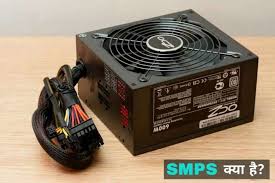SMPS stands for Switched-Mode Power Supply. Here's a concise overview:
1. **Functionality**: SMPS is a type of power supply that efficiently converts electrical power from one form to another. It takes in AC (alternating current) power from the mains and converts it into DC (direct current) power suitable for powering electronic devices such as computers, televisions, and other electronic equipment.
2. **Efficiency**: One of the key advantages of SMPS is its high efficiency. Unlike traditional linear power supplies, which dissipate excess energy as heat, SMPS regulates the output voltage by rapidly switching a series of transistors on and off. This switching action allows SMPS to achieve higher efficiency levels, reducing energy wastage and heat generation.
3. **Compact Size**: SMPS units are typically more compact and lightweight compared to linear power supplies with similar power ratings. This compactness makes them well-suited for use in modern electronic devices where space is often limited.
4. **Types**: There are various types of SMPS designs, including flyback, forward, push-pull, and half-bridge configurations. Each type has its own advantages and is suitable for different applications.
5. **Components**: SMPS typically consists of several key components, including a rectifier to convert AC to DC, a switching transistor or MOSFET (Metal-Oxide-Semiconductor Field-Effect Transistor), a transformer for voltage conversion, and a rectifier and filter to smooth the output voltage.
6. **Protection Features**: Many SMPS units include built-in protection features such as overvoltage protection, overcurrent protection, and short-circuit protection to safeguard connected devices from damage in case of electrical faults or fluctuations.
In summary, SMPS is a highly efficient and compact power supply solution widely used in modern electronic devices to convert electrical power from mains AC to DC, providing stable and reliable power for various electronic components and systems.


Comments
Post a Comment